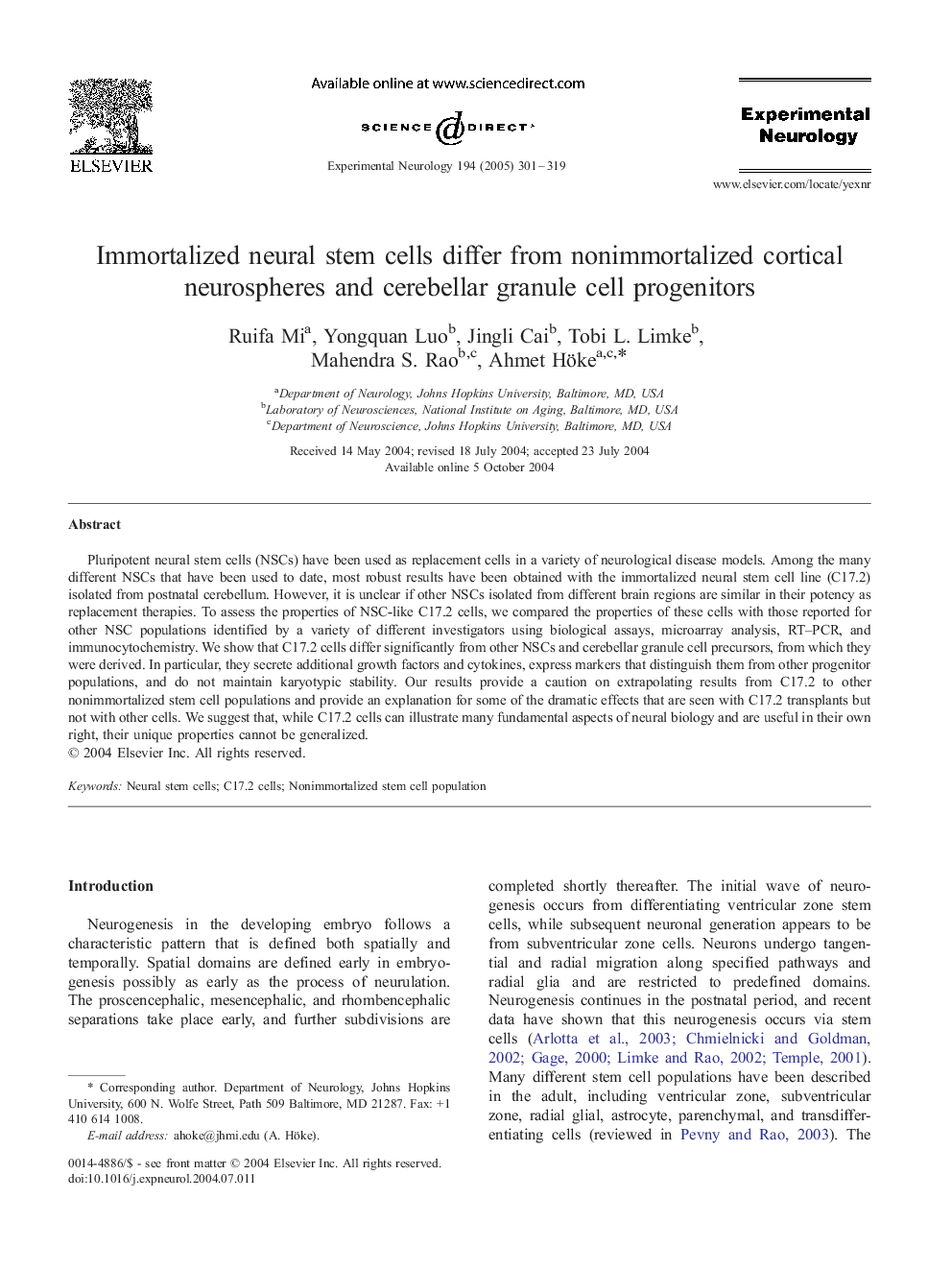| Article ID | Journal | Published Year | Pages | File Type |
|---|---|---|---|---|
| 9192100 | Experimental Neurology | 2005 | 19 Pages |
Abstract
Pluripotent neural stem cells (NSCs) have been used as replacement cells in a variety of neurological disease models. Among the many different NSCs that have been used to date, most robust results have been obtained with the immortalized neural stem cell line (C17.2) isolated from postnatal cerebellum. However, it is unclear if other NSCs isolated from different brain regions are similar in their potency as replacement therapies. To assess the properties of NSC-like C17.2 cells, we compared the properties of these cells with those reported for other NSC populations identified by a variety of different investigators using biological assays, microarray analysis, RT-PCR, and immunocytochemistry. We show that C17.2 cells differ significantly from other NSCs and cerebellar granule cell precursors, from which they were derived. In particular, they secrete additional growth factors and cytokines, express markers that distinguish them from other progenitor populations, and do not maintain karyotypic stability. Our results provide a caution on extrapolating results from C17.2 to other nonimmortalized stem cell populations and provide an explanation for some of the dramatic effects that are seen with C17.2 transplants but not with other cells. We suggest that, while C17.2 cells can illustrate many fundamental aspects of neural biology and are useful in their own right, their unique properties cannot be generalized.
Keywords
Related Topics
Life Sciences
Neuroscience
Neurology
Authors
Ruifa Mi, Yongquan Luo, Jingli Cai, Tobi L. Limke, Mahendra S. Rao, Ahmet Höke,
